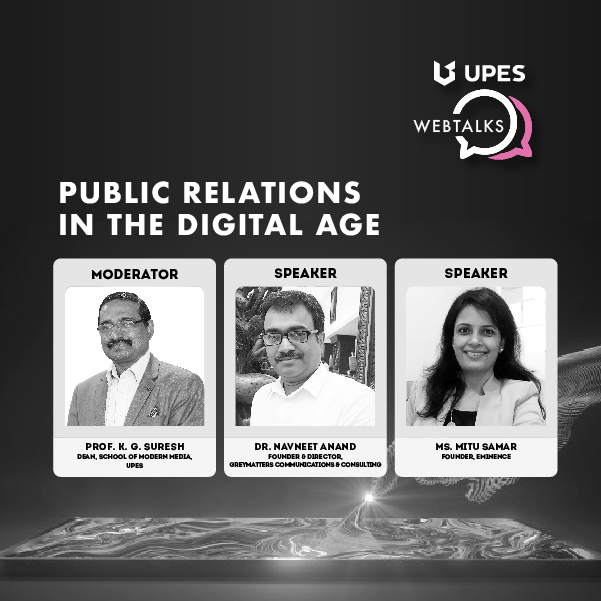Learn how digital trends are reshaping the media industry

In the 21st century, traditional media players have seen their business models getting disrupted. They now have to compete with digital platforms for the time and attention of consumers. As India’s only and digital-first media school, UPES School of Modern Media is nurturing students to thrive in an ever-evolving media ecosystem
Digital media is creating a new global order by revolutionising the way we communicate. The internet has democratised access to the creation and dissemination of content, giving everyone a platform and, more importantly, a voice. This is evident from the growing number of users and the amount of digital content being made and shared globally.
Twitter, in the last decade, has shown the world the power of news capsules. As 2020 reeled in one crisis after another, Twitter became a steady source of news and useful information. As per statistics, last year there were nearly 2.8 billion active users on Facebook. Positioned not far behind was the photo-sharing app Instagram with 1 billion active users and YouTube with 31 million channels across the world.
Transitioning to digital media
Digital media has given the power of freedom to its consumers. People no longer have to time their dinner with the news headlines broadcast at 9 pm. They can read, listen, watch, and comment on news at their convenience on a platform they prefer. This flexibility and access to information 24×7, with the option to give instant feedback, have empowered audiences. Today, editors in newsrooms, besides weighing in with their opinion, also analyse consumer behaviour using tools such as web traffic, page views, shares per article, and social media responses.
Digital media has also spotlighted stories that otherwise may have never made it to a newspaper’s front page. Today, thanks to digital media, wide-ranging perspectives enrich our knowledge and perception about climate change, conflicts, international relations, and the pandemic, thus facilitating debate and raising awareness around important public issues. Indisputably, digitalisation has resculpted the media landscape. So, what does this mean for students who are entering this new-age media terrain?
The media industry is evolving rapidly. Till a few years ago, media was about newspapers, television and radio. Now it is all about digital platforms. This convergence of traditional and digital media demands new skills. And that is what UPES School of Modern Media proposes to impart to its students.
Educating young professionals requires equipping them with industry-ready and future-focussed skills. UPES School of Modern Media does that by imparting literacy on content integration strategies and market dynamics. The school prepares students to put learning into practice through state-of-the-art studios, industry-aligned curriculum, interactions with eminent journalists and distinguished media scholars, and employment-relevant training. From communicating persuasively in different formats to engaging in classroom projects and professional opportunities, students get every exposure to unleash their potential and showcase their talents through workshops, seminars, and internships.
The school nurtures foundational skills and knowledge that position graduates to stay ahead in a fast-paced, competitive industry. Students are exposed to digital skills and concepts that qualify them for a range of careers in the emerging media landscape.
Watch the video to know more about why UPES is India’s first ‘digital-first’ media school.



